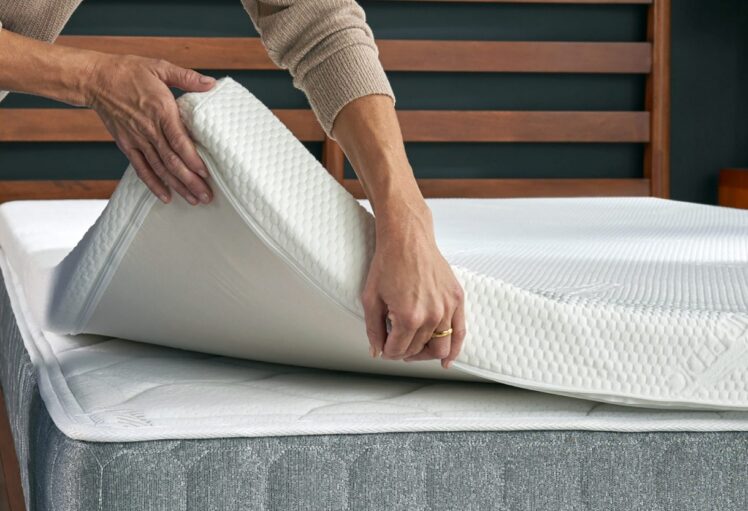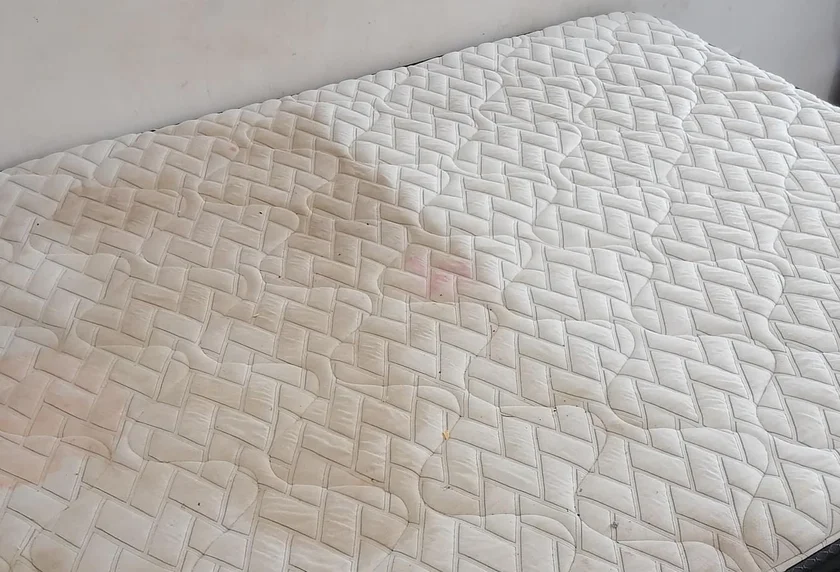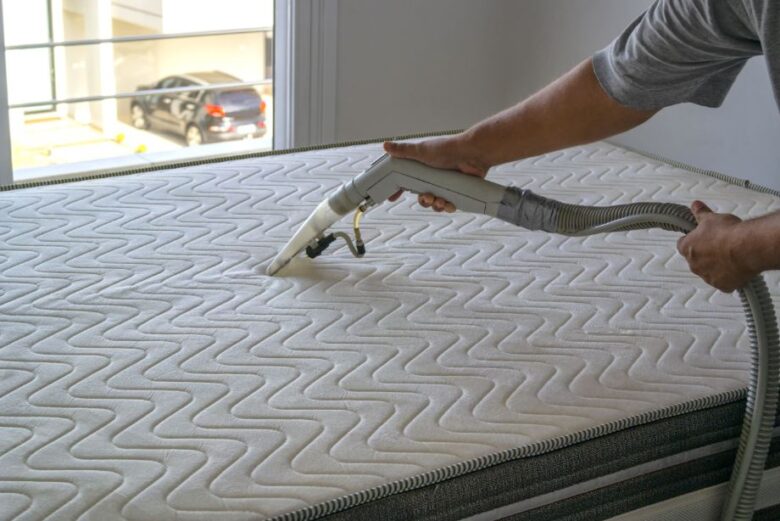Your mattress plays an important role in how well you sleep each night. The cleanliness of your mattress can have a significant impact on the quality of your sleep. In this article, we’ll discuss the steps we should follow in order to keep your mattress clean and provide extra tips for a sleep-friendly mattress.
Keeping your mattress clean from microscopic sleep disruptors is crucial for a well-maintained, healthy and comfortable sleep environment. In this section, we’ll delve into a step-by-step guide on how to clean your mattress at home. Additionally, we’ll learn about a recommended cleaning schedule to maintain a fresh and hygienic mattress.

Source: therapytools.co.za
Contents
Step-by-Step Guide to Cleaning Your Mattress at Home
Gather Your Supplies:
Before you begin, ensure you have the following cleaning supplies ready:
- A vacuum cleaner with an upholstery attachment
- Mild liquid detergent
- Water
- Baking soda
- A spray bottle
- Clean cloths or sponges
- A mattress protector (optional)
Remove Bedding:
Strip your bed of all sheets, pillowcases, and mattress protectors to expose the mattress.
Vacuum Thoroughly:
Use the upholstery attachment on your mattress cleaner to remove loose dust, dirt, and debris from the mattress surface. Focus on seams, crevices, and stained or soiled areas.
Spot Clean Stains:
For stubborn stains on your mattress, prepare a solution of mild liquid detergent and water. Blot the affected area with a fresh cloth or sponge in a gentle manner. Avoid saturating the mattress, as excess moisture can lead to mould or mildew. Allow the area to air dry before moving on.
Deodorise with Baking Soda/Mattress Cleaner:
Even if your mattress doesn’t have visible stains, sprinkle a thin, even layer of baking soda over the entire mattress surface. Baking soda is excellent for absorbing odours. Or you can use a mattress cleaner that has the option of deodorising which can help freshen up your sleeping surface. Follow the product instructions for the best results.
Allow to Dry:
Ensure that your mattress is completely dry before putting on fresh bedding or a mattress protector. This may take a few hours, the longer you leave it, the more odours it will absorb, so plan accordingly.
Vacuum Again
If baking soda is used for deodorising after you allow the baking soda to sit for a few hours, vacuum the entire mattress once more. This will help remove the baking soda, along with any odours it has absorbed.
Protect with a Mattress Protector:
After cleaning and drying, consider placing a mattress protector over your bed. A good-quality protector will help safeguard your mattress from future spills and stains.

Source: fortador-usa.com
Recommended Cleaning Schedule for Maintaining a Clean Mattress:
Monthly Maintenance:
Vacuum your mattress every month to remove surface dust, dust mites, and allergens. Consider lightly spraying and wiping down your mattress with a mattress cleaner for freshness.
Spot Cleaning as Needed:
If you notice spills or stains, address them promptly using your mattress cleaner, following the instructions on the product label.
Deep Cleaning Every 6 Months:
Every six months, perform a thorough cleaning with your mattress cleaner to ensure that your mattress remains clean and free of accumulated odours and stains. Follow the step-by-step cleaning guide mentioned above.

Source: neighbor.com
Here are some of the stain removal tips and techniques
Test Cleaning Products:
Before using any cleaning product or solution on your entire mattress, test it on a small, inconspicuous area to ensure it doesn’t cause discolouration or damage.
Use Enzymatic Cleaners:
For biological stains like urine, consider using enzymatic cleaners designed to break down proteins in the stain. These cleaners are effective at removing odour and stains.
Don’t Over-Wet the Mattress:
When cleaning with liquids, avoid over-wetting the mattress. Excess moisture can result in the development of mould and mildew. Blot the mattress gently, and ensure it dries completely.
Ventilate the Room:
Open windows and allow for proper ventilation in the room when cleaning and deodorising your mattress. This helps remove odours and speeds up the drying process.
Rotate and Flip Your Mattress:
If your mattress is double-sided and flippable, do so every three to six months to ensure even wear and reduce sagging.
Invest in a High-Quality Mattress Protector:
A waterproof and hypoallergenic mattress protector is an excellent investment. It not only safeguards your mattress from spills and stains but also protects against allergens and dust mites.
Regularly Replace Bedding:
Wash your sheets, pillowcases, and mattress protectors regularly to prevent the transfer of dirt, sweat, and allergens to your mattress.

Source: dwell.com
Consider Professional Cleaning:
If your mattress has deep-set stains or persistent odours that you can’t remove yourself, consider professional mattress cleaning services.
Follow the Manufacturer’s Care Guidelines:
Refer to the care instructions provided by the manufacturer for your specific mattress. This ensures you’re cleaning and maintaining it correctly while preserving the warranty.
Preventative Measures:
Use fitted sheets and mattress protectors to prevent spills and stains from reaching the mattress. This reduces the necessity for thorough cleaning.
Conclusion
In conclusion, taking the time to clean and maintain your mattress is a crucial aspect of creating a comfortable and hygienic sleep environment. A clean mattress not only enhances the quality of your sleep but also contributes to your overall health and well-being. By following a systematic approach, including regular vacuuming, spot cleaning, and deodorising, you can keep your mattress fresh and free from allergens and odours.
Ultimately, a clean mattress is an investment in your sleep quality and overall health. By incorporating these cleaning and maintenance practices, you can enjoy a more refreshing and comfortable sleeping experience for years to come.
